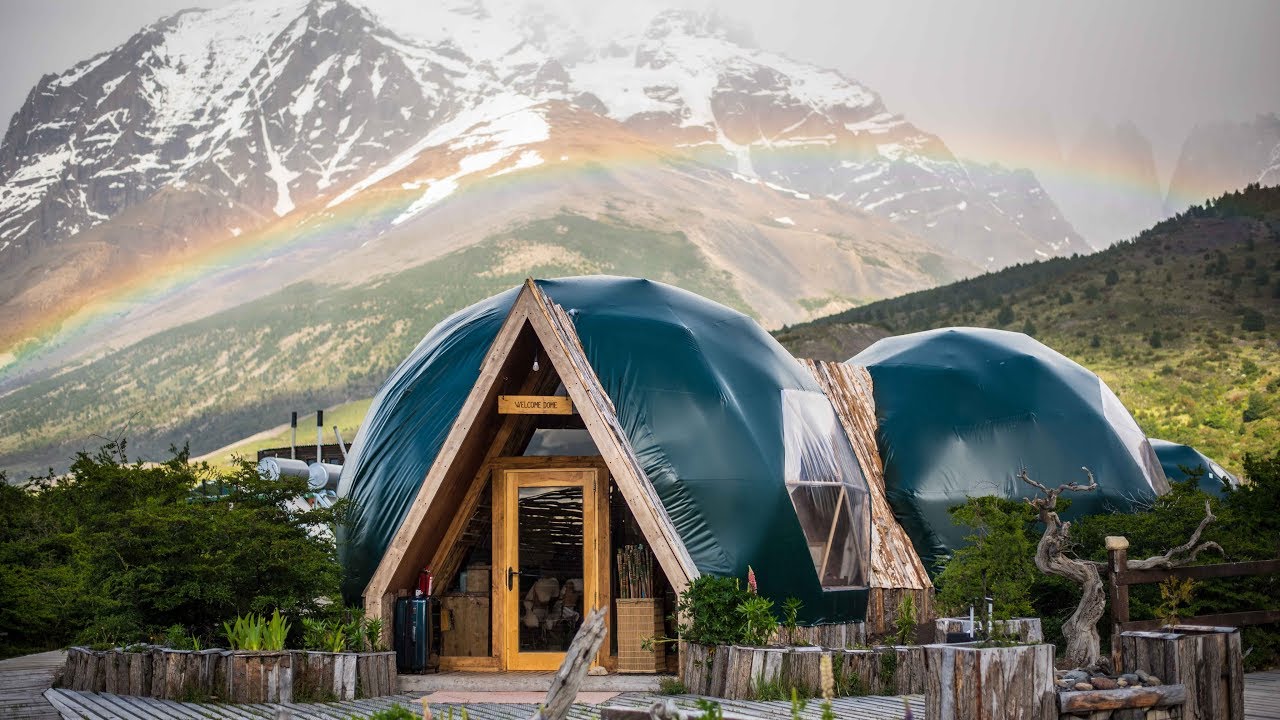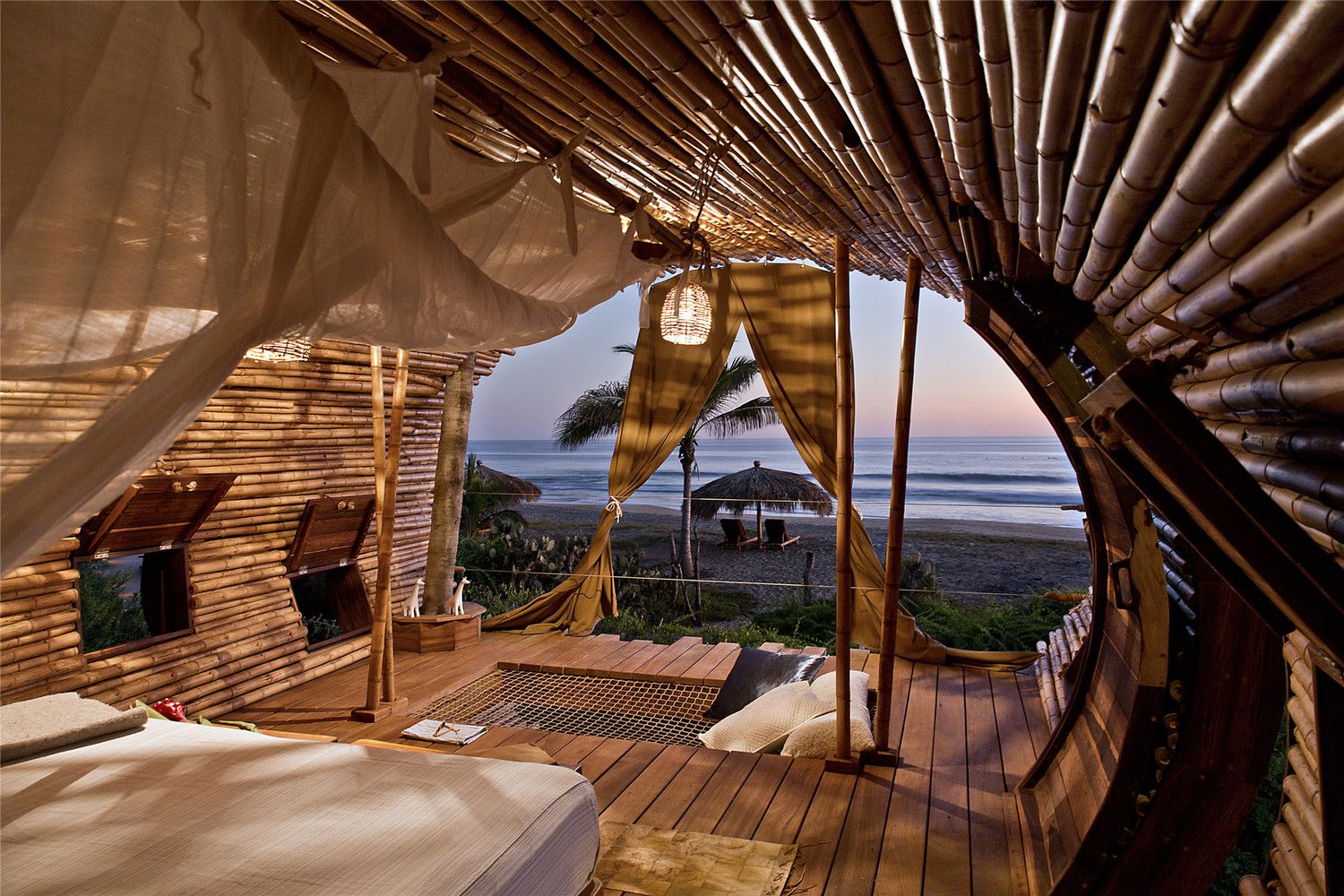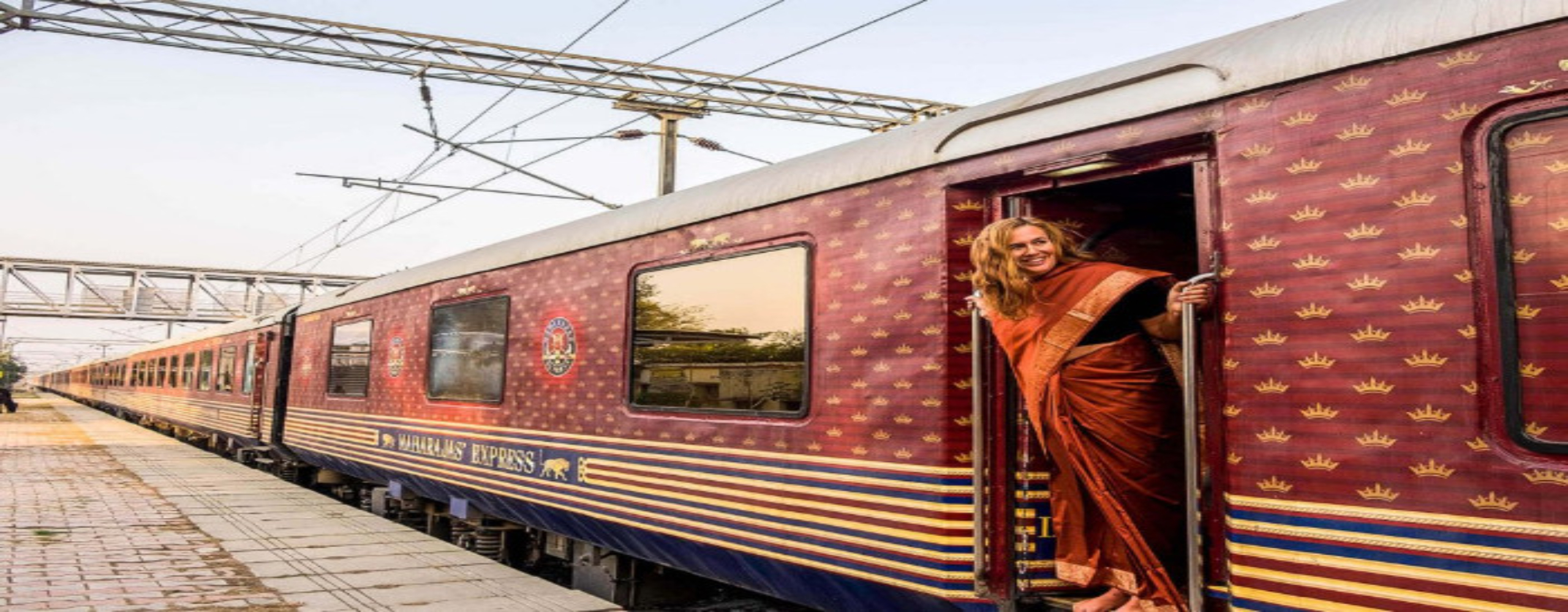Travel & Hospitality
Sustainable Accommodations Eco-Friendly Hotels and Resorts

In recent years, the hospitality industry has witnessed a paradigm shift towards sustainability, driven by growing environmental awareness and consumer demand for responsible travel options. Sustainable accommodations, particularly Eco-friendly hotels and resorts have emerged as a significant trend within this context. These establishments not only offer luxurious and comfortable stays but also prioritize environmental stewardship and social responsibility. This article explores the various dimensions of sustainable accommodations, focusing on the principles, practices, and benefits of Eco-friendly hotels and resorts.
Rise of Sustainable Travel
The travel and tourism sector is one of the largest industries globally, contributing significantly to economic growth and job creation. However, it also has a substantial environmental footprint, including carbon emissions, water consumption, and waste generation. As travelers become more conscious of their environmental impact, there is a growing demand for sustainable travel options. This shift has led to the rise of Eco-friendly hotels and resorts, which aim to minimize their ecological footprint while providing exceptional guest experiences.

Image by yandex.com
Defining Sustainable Accommodations
Sustainable accommodations refer to lodgings that implement environmentally friendly practices to reduce their impact on the planet. These practices encompass a wide range of initiatives, from energy and water conservation to waste reduction and sustainable sourcing of materials. Eco-friendly hotels and resorts go beyond mere compliance with environmental regulations; they actively seek to innovate and integrate sustainability into every aspect of their operations.
Principles of Sustainable Accommodations
Environmental stewardship is at the core of sustainable accommodations. Eco-friendly hotels and resorts adopt various strategies to minimize their environmental impact, including:
Energy Efficiency:** Utilizing energy-efficient lighting, heating, and cooling systems to reduce energy consumption.
Renewable Energy:** Incorporating renewable energy sources such as solar, wind, and geothermal power.
*Water Conservation:** Implementing water-saving fixtures, rainwater harvesting, and greywater recycling systems.
Waste Management:** Reducing, reusing, and recycling waste materials to minimize landfill contributions.
Sustainable Building Practices:** Using eco-friendly construction materials and designing buildings to maximize natural light and ventilation.
Social Responsibility
Sustainable accommodations also emphasize social responsibility, recognizing the importance of supporting local communities and promoting cultural heritage. Key practices include:
*Local Sourcing:** Procuring food, materials, and services from local suppliers to support the local economy and reduce transportation emissions.
– **Fair Labor Practices:** Ensuring fair wages, safe working conditions, and opportunities for professional development for employees.
– **Community Engagement:** Collaborating with local communities on conservation projects, cultural preservation, and educational initiatives.
– **Cultural Sensitivity:** Promoting and respecting local traditions, customs, and heritage.
Economic Viability
For sustainable accommodations to be successful, they must also be economically viable. This involves balancing environmental and social initiatives with financial performance. Strategies include: Cost Savings:** Reducing operational costs through energy and water efficiency, waste reduction, and sustainable sourcing.Brand Differentiation:** Attracting environmentally conscious travelers by promoting sustainability credentials. Long-Term Investment:** Investing in sustainable technologies and practices that yield long-term benefits and resilience.
Practices of Eco-Friendly Hotels and Resorts
Eco-friendly hotels and resorts often incorporate green building design principles to enhance sustainability. Key features include:*LEED Certification:** Achieving Leadership in Energy and Environmental Design (LEED) certification for sustainable building practices. Passive Design:** Utilizing natural light, ventilation, and thermal mass to reduce energy consumption. Green Roofs and Walls:** Installing vegetation on roofs and walls to improve insulation, reduce heat island effect, and enhance biodiversity.
Energy and Water Management
Effective energy and water management are critical components of sustainable accommodations. Practices include*Energy-Efficient Appliances:** Installing energy-efficient appliances and systems, such as LED lighting, smart thermostats, and high-efficiency HVAC systems. Renewable Energy Systems:** Integrating solar panels, wind turbines, and geothermal systems to generate clean energy on-site.
*Water-Saving Fixtures:** Using low-flow faucets, showerheads, and toilets to reduce water consumption.*Rainwater Harvesting:** Collecting and storing rainwater for irrigation and non-potable uses. Greywater Recycling:** Treating and reusing greywater from sinks, showers, and laundry for landscaping and other purposes.
Waste Reduction and Recycling
Minimizing waste and promoting recycling are essential for eco-friendly hotels and resorts. Key initiatives include:Waste Audits:** Conducting regular waste audits to identify opportunities for reduction and improvement. Composting:** Implementing composting programs for organic waste, such as food scraps and garden clippings. Recycling Programs:** Providing recycling bins and educating guests and staff on proper recycling practices.
Sustainable Sourcing and Procurement
Sustainable accommodations prioritize responsible sourcing and procurement to support environmental and social goals. Practices include *Local and Organic Food:** Sourcing food from local, organic, and sustainable farms to reduce carbon footprint and support local agriculture.Eco-Friendly Products:** Using eco-friendly cleaning products, toiletries, and amenities that are biodegradable and non-toxic.Fair Trade and Ethical Suppliers:** Partnering with suppliers that adhere to fair trade and ethical labor practices.
Guest Engagement and Education
Eco-friendly hotels and resorts recognize the importance of engaging and educating guests on sustainability. Initiatives include:Sustainability Programs:** Offering programs and activities that promote environmental awareness, such as nature walks, wildlife conservation tours, and eco-workshops.Green Certifications:** Displaying green certifications and awards to highlight sustainability achievements.Guest Communication:** Providing information on sustainable practices and encouraging guests to participate in conservation efforts, such as towel and linen reuse programs.

Image by yandex.com
Benefits of Sustainable Accommodations
The environmental benefits of sustainable accommodations are significant and far-reaching. These include*Reduced Carbon Footprint:** Lower energy consumption and increased use of renewable energy reduce greenhouse gas emissions.
– **Conservation of Natural Resources:** Efficient water and waste management practices conserve valuable natural resources.
– **Biodiversity Preservation:** Sustainable landscaping and habitat restoration efforts support local wildlife and biodiversity.
Social Benefits
Sustainable accommodations also generate positive social impacts, including:Community Empowerment:** Supporting local economies and providing employment opportunities for local residents*Cultural Preservation:** Promoting and preserving local cultural heritage and traditions.Enhanced Guest Experience:** Offering unique and meaningful experiences that connect guests with nature and local communities.
Economic Benefits
From an economic perspective, sustainable accommodations offer several advantages:Cost Savings:** Reduced operational costs through energy and water efficiency, waste reduction, Increased Revenue:** Attracting environmentally conscious travelers and enhancing brand reputation.Long-Term Resilience:** Building resilience to environmental and economic challenges through sustainable practices.
Conclusion
Sustainable accommodations, particularly eco-friendly hotels and resorts, represent a growing and essential trend in the hospitality industry. By prioritizing environmental stewardship, social responsibility, and economic viability, these establishments are setting new standards for responsible travel. As the demand for sustainable travel options continues to rise, eco-friendly hotels and resorts will play a crucial role in shaping the future of the hospitality industry, offering guests memorable and meaningful experiences while safeguarding the planet for future generations.
Travel & Hospitality
Cheap Flights and Exclusive Offers | ConfirmationTickets.com

Introduction
Finding affordable airfare has become one of the top priorities for today’s travelers. Whether you’re planning a family vacation, a business trip, or a spontaneous weekend getaway, everyone wants to secure the best flight deals without overspending. With fluctuating airline prices, competitive routes, and endless booking platforms, choosing the right place to book can significantly impact your travel budget. This is where ConfirmationTickets.com steps in as your trusted partner for booking cheap flights and securing affordable airline tickets effortlessly.
In this detailed guide, you will discover how ConfirmationTickets.com helps travelers find low-cost flights, the benefits of booking through the platform, and smart hacks to stretch your travel budget further.
Why Booking Cheap Flights Matters More Than Ever
With the global rise in travel demand, airline ticket prices often fluctuate unpredictably. For the budget-conscious traveller, every rupee saved on airfare can be used to enhance the travel experience—whether it’s better accommodations, shopping, sightseeing, or dining. When you choose a platform designed to filter and find the best deals in seconds, the entire travel planning journey becomes easier and more enjoyable.
ConfirmationTickets.com stands out because it understands the modern traveller. The platform is user-friendly, offers transparent pricing, and brings you real-time deals from multiple airlines—ensuring that you always pay the lowest possible price for your next trip.
Why Choose ConfirmationTickets.com for Cheap Airline Tickets?
Finding a reliable portal for flight bookings can be challenging. Here’s what makes ConfirmationTickets.com one of the best choices for travelers:
1. Real-Time Flight Deals
Airline prices change multiple times a day. ConfirmationTickets.com tracks these fluctuations and updates prices instantly. This helps travelers book at the right time and avoid overpaying.
2. Compare Multiple Airlines in One Click
The platform aggregates flight options from both domestic and international airlines. Whether you’re travelling within India or flying abroad, you can easily compare prices, flight duration, layovers, and baggage rules before choosing the best deal.
3. No Hidden Charges
One of the biggest frustrations travelers face is hidden fees during checkout. ConfirmationTickets.com maintains transparent pricing, so what you see is what you pay.
4. Easy Booking Process
The website is designed for simplicity and speed. Within minutes, you can search, compare, and book your ticket without hassle.
5. Exclusive Discounts & Promo Offers
The platform frequently offers special discounts, promotional codes, and seasonal deals. This makes it even easier to book cheap flights and save more.
How to Book Cheap Flights on ConfirmationTickets.com
Booking affordable flights isn’t just about luck—it’s about strategy. Here’s how you can maximize your savings:
1. Be Flexible with Travel Dates
Airfare can vary significantly depending on the day and season. If you can travel a day earlier or later, you may find cheaper options immediately.
2. Book in Advance
For popular routes, ticket prices rise as the travel date approaches. Booking 30–45 days before departure can help you secure low fares.
3. Choose Off-Peak Travel Seasons
Flying during festivals, long weekends, and holidays often costs more. Consider traveling during shoulder seasons for big savings.
4. Turn On Alerts
Use price alerts on ConfirmationTickets.com to get notified when fares drop for your preferred route.
5. Compare multiple airlines
Sometimes the difference between two airlines can be significant. Always compare before booking to ensure you’re choosing the best value option.
Domestic Flight Bookings Made Easy
India’s domestic travel market is booming, and millions of travellers fly every day for work, leisure, and family visits. ConfirmationTickets.com offers competitive prices for major domestic routes such as
- Delhi → Mumbai
- Bengaluru → Delhi
- Kolkata → Hyderabad
- Chennai → Pune
- Jaipur → Goa
- Ahmedabad → Bengaluru
Whether it’s a short business trip or a relaxing beach vacation, the platform provides quick access to the best domestic flight deals.
International Flights at the Best Prices
Travelling abroad doesn’t have to be expensive. With smart planning and a reliable platform like ConfirmationTickets.com, you can explore top destinations without worrying about high ticket prices.
Popular international routes available at affordable rates include:
- India → Dubai
- India → Singapore
- India → Thailand
- India → Qatar
- India → Malaysia
- India → Europe
The portal highlights major airlines along with their best fare options, helping you choose the most convenient and budget-friendly flight.
Top Benefits of Booking with ConfirmationTickets.com
1. 24/7 Customer Support
Whether you need help modifying your booking, understanding travel restrictions, or checking airline policies, the support team is always available.
2. Safe & Secure Payments
The platform uses encrypted payment gateways to ensure your transactions are completely secure.
3. Fast Refunds and Easy Cancellations
Plans can change, and ConfirmationTickets.com offers smooth refund processes depending on airline policies.
4. Mobile-Friendly Booking
You can search and book flights directly from your mobile device, making it convenient for travelers on the go.
Travel Smart With These Additional Tips
To enhance your savings further, consider these expert recommendations:
- Avoid last-minute bookings unless necessary.
- Check nearby airports for cheaper alternatives.
- Use incognito mode to avoid dynamic price increases.
- Avoid too many layovers unless the savings are worth it.
- Check airline baggage rules before booking to avoid extra fees.
Final Thoughts
Booking affordable flights doesn’t have to be stressful or time-consuming. With ConfirmationTickets.com, travelers can easily find the best fares on domestic and international flights. The platform combines convenience, transparency, and competitive pricing to simplify your travel planning process. Whether you’re a frequent flyer or planning your first trip, ConfirmationTickets.com ensures that you get the cheapest airline tickets without compromising on comfort or quality.
So, why wait? Start exploring deals today and make your next journey cost-effective, smooth, and memorable.
Travel & Hospitality
Cheap Flight Booking and Affordable Travel

Introduction
When it comes to planning the perfect trip, finding cheap flight booking options is one of the biggest challenges for travellers. AVP Holidays makes this easier by offering cheap flights, low-cost flights, and exclusive flight deals that help every traveller save more and travel better. Whether you’re planning a family holiday, a business trip, or a last-minute getaway, AVP Holidays ensures smooth, budget-friendly travel planning with unbeatable offers.
Fly Smart with AVP Holidays
AVP Holidays is a one-stop travel platform where travellers get access to discount flights, best flight deals, and curated vacation packages. The goal is simple make travel affordable without compromising comfort. With a wide network of airline partners and real-time fare comparisons, travellers can book budget flights to domestic and international destinations at the lowest prices.
Whether you’re travelling for leisure or work, AVP Holidays helps you choose the best route, best airline, and the most affordable airfare for your journey.
Why AVP Holidays is the Best Choice for Affordable Travel
1. Cheap Flight Booking Made Easy
The platform offers seamless search and booking options that allow users to find cheap flights in just a few clicks. Their intelligent fare-checking system scans multiple airlines and online travel portals to bring you the lowest prices available.
2. Best Flight Deals Every Day
Travelers can grab exclusive offers, festive discounts, early-bird offers, seasonal sales, last-minute offers, and more. These best flight deals help you travel more often without overspending.
3. Low-Cost Flights Without Hidden Charges
AVP Holidays ensures transparency. The price you see is the price you pay—no unexpected extra fees. You get access to genuine low-cost flights, perfect for budget travellers.
4. Budget Flights for Every Destination
Whether you’re flying to Dubai, Singapore, Goa, Kerala, Europe, or Maldives, AVP Holidays provides budget flights that suit every travel style and every pocket.
5. Exclusive Discounts & Affordable Flights
Looking for discount flights? AVP Holidays regularly updates its offers so travellers can book affordable flights at any time of the year. Their team also helps find customized fare options for students, families, corporate travellers, and honeymooners.
More Than Just Flights: A Complete Travel Experience
AVP Holidays not only offers cheap flight booking but also provides full travel support including hotel reservations, tour packages, visa assistance, airport transfers and holiday planning. Their experts design customized packages tailored to your budget and interests.
Whether you want beach holidays, mountain retreats, pilgrimage tours, adventure trips, luxury getaways, or international vacations, AVP Holidays handles everything from flights to hotels and sightseeing.
Who Should Choose AVP Holidays?
- Budget travellers searching for the best airfare
- Families planning affordable vacations
- Business travellers looking for reliable bookings
- Couples on honeymoon or romantic getaways
- Solo travellers who want low-cost options
- Last-minute flyers looking for urgent cheap flights
No matter what kind of traveller you are, AVP Holidays ensures you get the best flight deals, low-cost flights, and the most affordable flights for any destination.
Travel Beyond Flights: Complete Holiday Solutions
AVP Holidays is not limited to offering cheap flight booking. It also provides complete holiday solutions including:
- Hotel bookings
- Tour packages
- Customized holidays
- Airport transfers
- Cruise bookings
- Visa assistance
- Travel insurance
This means you get everything in one place from cheap flights to hotel arrangements and sightseeing. Whether you’re planning a beach vacation, mountain getaway, international tour, or a family holiday, AVP Holidays creates itineraries that match your travel style, schedule, and budget.
What Makes AVP Holidays Different?
- Customer-Centric Approach: AVP Holidays focuses on what travellers need comfort, flexibility, and affordability. Their customer support team helps you with flight options, rescheduling, cancellations, and special requests.
- Wide Range of Airline Partners: They work with multiple domestic and international airlines, giving you more choices and better prices.
- Tailor-Made Packages: Every traveller is unique, and AVP Holidays designs custom trips based on personal preferences.
- Secure Payments & Safe Booking: Your booking experience is protected with secure payment gateways and verified airline partners.
- Last-Minute Travel Assistance: Need urgent tickets? AVP Holidays specializes in last-minute cheap flights and fast confirmations.
Who Can Benefit from AVP Holidays?
AVP Holidays is ideal for:
- Budget travellers who want cheap flight booking
- Families seeking affordable holiday packages
- Students needing low-cost flights
- Business travellers looking for reliable bookings
- Honeymoon couples searching for deals
- Solo travellers wanting affordable flights
- Group travellers booking in bulk
- Last-minute travellers needing urgent flight deals
No matter the purpose of travel, you’ll always find a suitable option with the help of AVP Holidays.
Fly More, Save More: With AVP Holidays
In a competitive travel market, finding a trustworthy and affordable booking partner can make a significant difference. AVP Holidays stands out by consistently offering cheap flights, budget flights, discount flights, and some of the best flight deals available online. Their focus on affordability, convenience, and customer satisfaction has made them a preferred choice for travellers across the world.
Whether you’re planning a relaxing family holiday, an adventure trip, a romantic escape, or an urgent business journey, AVP Holidays ensures that your flight booking experience is smooth, budget-friendly, and stress-free.
Travel & Hospitality
Why the Maharajas’ Express Offers the Best Royal Experience in Asia

Introduction
When it comes to luxury travel in Asia, few experiences can compare to the Maharajas Express, India’s award-winning royal train. Known globally for its grandeur, impeccable hospitality, and immersive cultural journeys, this train has consistently ranked among the world’s best luxury trains. But what exactly makes the Maharajas’ Express the finest royal experience in Asia? Here’s a comprehensive look into its offerings, routes, prices, and why every traveler should experience it at least once.
Why the Maharajas’ Express Offers the Best Royal Experience in Asia
1. A Train Crafted for Royalty
The moment guests step onboard the Maharajas’ Express Train, they are transported into the opulent world of India’s former maharajas. The train’s interiors feature:
- Rich silk furnishings
- Hand-woven carpets
- Elegant suites inspired by royal residences
- State-of-the-art amenities
Whether staying in a Deluxe Cabin or the ultra-luxurious Presidential Suite, travelers enjoy an ambiance that blends traditional Indian royal elegance with modern comfort.
2. Thoughtfully Crafted Routes Across India
The Maharajas’ Express Route is one of the main reasons it stands out. Covering India’s most iconic destinations, its journeys include:
Popular Maharaja Express Train Journeys
- The Heritage of India
- Treasures of India
- Indian Panorama
- Indian Splendor
These routes cover world-famous landmarks such as:
- Taj Mahal
- Jaipur’s palaces
- Ranthambore National Park
- Varanasi ghats
- Khajuraho temples
- Fatehpur Sikri
- Udaipur’s lakes
Each itinerary is curated to showcase India’s culture, history, wildlife, art, and cuisine.
3. Transparent and Inclusive Pricing
Understanding the Maharajas’ Express Ticket Price helps travelers appreciate the unmatched value it offers. Prices vary depending on the journey and cabin type but generally include:
- Five-star onboard accommodation
- All meals and beverages
- Guided off-board excursions
- Entrance fees to monuments
- Exclusive cultural experiences
- Luxury transportation and butler service
This all-inclusive model ensures that once onboard, guests simply relax and enjoy the regal lifestyle.
4. Fixed Annual Departure Dates for Ease of Planning
The train operates between October and April, with pre-scheduled Maharajas’ Express Departure Dates announced annually. This makes planning easier for international travelers, who often align their India tours with the train’s calendar.
Due to its global popularity, cabins fill quickly especially during peak travel months so early booking is highly recommended.
5. Effortless Booking and Premium Travel Assistance
Booking a seat on this luxury train is simple through authorized partners offering Maharajas’ Express Ticket Booking services. Many agencies provide:
- Best available rates
- Early-bird offers
- Group booking discounts
- Assistance with visa, flights, and pre/post-tour arrangements
This seamless booking experience adds to the train’s reputation as a premium, traveler-friendly luxury product.
6. Exceptional Onboard Hospitality
Hospitality is where the Maharajas’ Express truly shines. Each guest receives 24/7 butler service, ensuring every need no matter how small is taken care of with care and precision. Signature highlights include:
- Multi-cuisine fine-dining restaurants
- Onboard lounges and bars
- Curated beverages and traditional Indian delicacies
- Cultural performances and themed evenings
The staff-to-guest ratio is designed to offer personalized attention throughout the journey.
7. A Multi-Sensory Cultural Experience
Beyond lavishness, travelers choose this train for its ability to immerse them in authentic Indian culture. Experiences include:
- Wildlife safaris in Ranthambore
- Royal elephant welcome ceremonies
- Boat rides on the Ganges
- Champagne breakfasts with Taj Mahal views
- Folk dance shows
- Market visits and artisan interactions
These activities make the journey far more meaningful than just a train ride it becomes a cultural celebration.
8. Why It’s Considered the Best Royal Train in Asia
The Maharajas’ Express stands out because it combines:
- World-class comfort
- Impeccable service
- Curated cultural immersion
- Iconic destinations
- Royal design and ambiance
No other train in Asia offers this unique blend of luxury and heritage one that mirrors the grandeur of India’s royal past while delivering modern sophistication.
Aboard this magnificent train, passengers enjoy palatial interiors, fine-dining restaurants, personal butlers, and guided off-board excursions, making every moment unforgettable.
Why Choose Maharajas’ Express for Your Luxury Train Travel?
The Maharaja Express Train Journey takes travelers through India’s most iconic destinations from historical forts to wildlife parks and cultural hotspots.
- Stunning royal interiors
- Spacious cabins with modern amenities
- Gourmet food and onboard lounge bars
- Personal attendants for 24×7 service
- Cultural experiences and luxury sightseeing tours
This train is truly a celebration of royal Indian hospitality in motion.
Popular Maharaja Express Routes
The train offers multiple itineraries showcasing different parts of India:
- Heritage of India: Explore Mumbai, Udaipur, Jodhpur, Jaipur & Agra
- Indian Panorama: A beautiful mix of history and culture from Delhi
- Treasures of India: A short yet luxury-packed Golden Triangle trip
- Indian Splendour: Discover wildlife + heritage treasures of North India
Choose your preferred Maharaja Express Route based on interests heritage, wildlife, culture, or festivals.
Conclusion
The Maharajas’ Express Train is more than a luxury rail journey—it’s a once-in-a-lifetime experience. From its iconic routes to its royal interiors, gourmet meals, and personalized hospitality, every detail is designed to transport travelers into an era of regal opulence. Whether you’re exploring India for the first time or seeking a new luxury adventure, this train stands as Asia’s ultimate royal travel experience.
-
Business2 years ago
Cybersecurity Consulting Company SequelNet Provides Critical IT Support Services to Medical Billing Firm, Medical Optimum
-
Business2 years ago
Team Communication Software Transforms Operations at Finance Innovate
-
Business3 years ago
Project Management Tool Transforms Long Island Business
-
Business2 years ago
How Alleviate Poverty Utilized IPPBX’s All-in-One Solution to Transform Lives in New York City
-
health3 years ago
Breast Cancer: The Imperative Role of Mammograms in Screening and Early Detection
-
Sports3 years ago
Unstoppable Collaboration: D.C.’s Citi Open and Silicon Valley Classic Unite to Propel Women’s Tennis to New Heights
-
Art /Entertainment3 years ago
Embracing Renewal: Sizdabedar Celebrations Unite Iranians in New York’s Eisenhower Park
-
Finance3 years ago
The Benefits of Starting a Side Hustle for Financial Freedom






























